The following videos take you on a tour through your path to a PhD, and some of the many labs and facilities that the Department of Chemistry has to offer prospective students.
The following information and videos are divided into two groups, Research Groups, and Facilities.
Research Groups

The Backlund Lab develops and applies advanced microscopy techniques that incorporate elements of quantum sensing in order to resolve nanoscale heterogeneity in systems relevant to chemistry, materials, and biology. Group members will have the opportunity to gain expertise in optics, quantum science, imaging science, single-molecule microscopy, biophysics, soft matter physics, and more. Our work is primarily experimental, but some projects have a significant theoretical component as well.
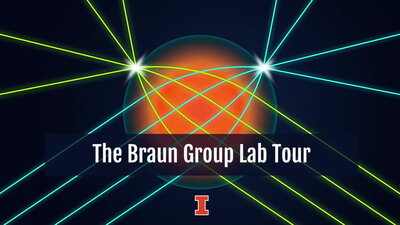
The Braun Group Research program covers a wide range of materials science disciplines, with a general focus on the formation and study of nano and microstructures through self and directed assembly. Materials containing structure on these length scales have been found to exhibit interesting and important electrical, optical, mechanical and biological properties. We often use and develop new materials chemistry and self-assembly approaches for the synthesis of these materials, which allows us to create novel structures and materials including photonic band gap structures, conducting polymers , nanostructured ceramics, semiconductors, biomaterials and thermoelectric materials. In other projects in our group, we are investigating molecular transport in confined geometries, self-healing polymers and the synthesis of functionalized nanoparticles.

Projects in the Gewirth Group focus on several themes related to structure and reactivity at interfaces, especially those immersed in solution. These projects are directed at addressing fundamental questions related to energy and environmental issues. We examine and develop new catalysts for small molecule reactivity related to remediation and energy production, particularly oxygen reduction and carbon dioxide conversion. We study the structure of the electrochemical double layer and the structure of solvents at surfaces. Another group of projects focuses on interrogating the reactivity of Li ion batteries and seeks to develop new cathode and anode materials for these devices. We also study new, alternative batteries such as those based on magnesium and lithium-sulfur.
Students working in this group have the opportunity to use sophisticated instrumentation appropriate to interrogate interfaces. In addition to variable temperature probe microscopy (STM, AFM) in a variety of environments, we utilize vibrational spectroscopy (reflectance IR, surface enhanced Raman spectroscopy), a infrared-visible SFG instrument operational in MRL, and more traditional electrochemical methods. We also use a full suite of characterization tools such as photoemission spectroscopy, TEM and SEM, and use synchrotron radiation to scatter X-rays both in and out of plane from these materials. Computational efforts also provide complementary insight into surface electronic structure.

The research in the Guironnet Group will take on the challenge of implementing recent advances in homogeneous catalysts into continuous processes. We will do this with a particular emphasis on polymer and fine chemical productions.
The research focuses on four major areas:
- Shape controlled macromolecules
- Emulsion polymerizaton
- Functionalized polyolefins
- Reactor engineering/catalysis
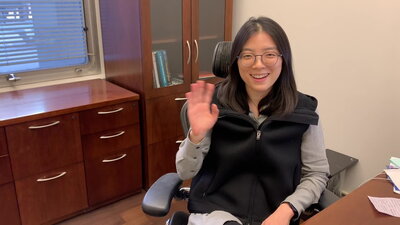
The Han Lab is a team of young, enthusiastic scientists working at the interface of chemistry, engineering, biology, and medicine. Harnessing our expertise in materials chemistry, nanotechnology, bioimaging, and microfluidics, we develop innovative methodologies to unveil the molecular and cellular mechanisms governing the ensemble behavior of heterogeneous, dynamic biological systems. In particular, we establish new bioanalytical platforms to extract the detailed molecular, structural and environmental characteristics of tissues and microbial populations in their native states. By characterizing the spatial and functional organization of biological components and studying how these components interact, we aim to learn how molecules and cells collectively perform system-level functions. High throughput, high resolution, and unbiased measurements of complex systems require multiple levels of innovations in imaging, sequencing, or cell manipulation tools. Towards these goals, we develop high quality quantum dot probes, establish new imaging platforms, create new microfluidic modules, study fluidic dynamics in microfluidic channels for controlled manipulation of cells and drops, and generate computational analysis pipelines.
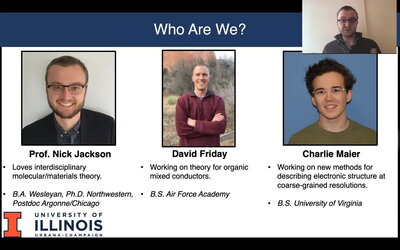
The Jackson Lab is a theoretical and computational soft materials research group, housed in the Chemistry Department at the University of Illinois, Urbana-Champaign, opening its doors in January 2021.
Our work integrates molecular quantum mechanics, computational statistical mechanics, and machine learning to characterize the multiscale structure and function of soft materials with useful optoelectronic, bioelectronic, and sustainability applications.

The Luthey-Schulten Group is a computational chemistry group working within the University of Illinois at Urbana-Champaign. Headed by Zaida (Zan) Luthey-Schulten, the current research is focused on:
• Modeling a Minimal Cell
• Cell Simulation Software: Lattice
Microbes
• Energy Metabolisms in Cells
• Combining Metabolic Genetic
Information Process
• Ribosome Biogenesis in Whole Cells
• Protein Guided RNA Dynamics in Ribosome Assembly
• Bistability in Bacterial and Yeast Genetic Switch
• Modeling Heterogeneity in Bacterial Colonies

Research in the Mirica Group uses inorganic chemistry, organic chemistry, and chemical biology to address important metal-mediated processes with energy, biological, and medical relevance. An interdisciplinary, problem-based approach will be employed for the synthesis and characterization of new organic and inorganic compounds, with the ultimate goal to address unsolved problems with broad implications to our society.

Research in the Olshansky Lab is focused on mimicking the way that biological systems use structural changes as a vehicle for the interconversion of different forms of energy (e.g. converting binding energy, sunlight, or pH gradients into chemical energy). This mechanistic paradigm is prevalent in biology and represents a powerful means with which to direct energetically demanding reactions with minimal energy input.

The Rodríguez-López Laboratory's research focuses on characterizing heterogeneous electrode materials for elucidating their function and generating new strategies to advance electrochemical energy technologies and sensing. Our objective is to pioneer powerful methods of analysis at the nano- and micro-scale for understanding how electrode structure, shape and size, as well as the formation of chemical intermediates, impact the performance of materials and interfaces for batteries, electrocatalysts, and photoelectrocatalysts. The group combines interests in analytical and materials chemistry.

The Shen Research Lab focuses on development of nanosensor probes for the detection of neurotransmitters and application of nanoelectroanalytical chemistry in the field of neuroscience. One area of interest is the development of novel, multifunctional, nanometer sized sensor probes that can be used to detect a wide range of neurotransmitters, including both electrochemically redox active and non-redox active ones. Another major focus in the group is on studying neurotransmission with nanometer spatial resolution.

The Vura-Weis Lab measures electron transfer and reactivity in systems containing multiple heavy atoms at femtosecond to nanosecond timescales. The central thesis of our group is that by combining the ultrafast time resolution of femtosecond lasers with the element specificity of core-to-valence spectroscopy, we can measure short-lived states that are obscured using traditional spectroscopic techniques. Using a process called high-harmonic generation, we convert near-infrared laser pulses into extreme ultraviolet (XUV) pulses in the 30-100 eV energy range. This technique has primarily been developed in the physics and chemical physics communities, and it is the goal of our group to extend its use to mainstream problems in physical and inorganic chemistry. Our major scientific targets are shown in Figure 1: molecular photocatalysis with bimetallic metal complexes, photomagnetism and photoinduced spin crossover, and organohalide perovskite photovoltaics. These systems are an order of magnitude more complex than the usual targets of XUV spectroscopy, so this work requires innovations in both instrumentation and interpretation.
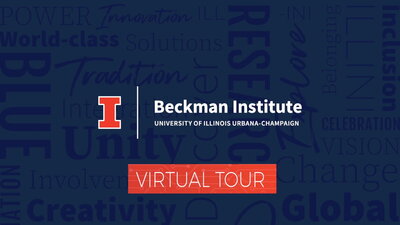
The Beckman Institute is a community of scholars and a physical space to foster interdisciplinary collaboration, inspire bold scientific risk-taking, and nurture new ideas and discoveries. The institute was founded to reduce barriers between traditional science and technology disciplines in order to yield research advances that otherwise would not occur. Beckman community members accomplish this mission by adhering to our core values.
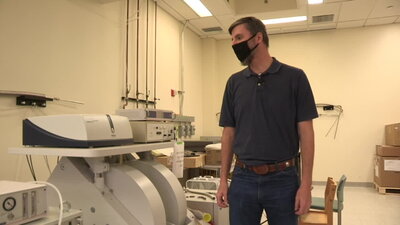
The Electron Paramagnetic Resonance (EPR) Laboratory takes care of all of your EPR (electron paramagnetic resonance), ENDOR, and ESEEM needs. EPR has applications in chemistry, physics, biology, and medicine: it may be used to probe the “static” structure of solid and liquid systems, and is also very useful in investigating dynamic processes.

The Glass Shop is an on-site facility for creating or repairing one-of-a-kind glassware. Clients can work directly with a scientific glassblower to develop new designs and to make custom glassware needed for research. The facility also specializes in the repair and modification of existing glassware, often reducing cost and downtime associated with replacement of critical equipment.

The Machine Shop builds and repairs ultra-high vacuum, high pressure, optical and mechanical equipment. The facility also assists in the design of new and custom equipment to meet research needs. They operate a student shop which provides training in basic milling, drilling, lathe turning, soldering, and sawing techniques. This training course also discusses the generation and interpretation of machine drawings.

The Mass Spectrometry Laboratory (MSL) provides a wide range of chemical analysis using mass spectrometry techniques for organic and biological samples. The facility is capable of performing analysis on small molecules, small or large non-volatile molecules and mixtures using a variety of ionization techniques. Instruments range from Quadrupole time-of-flight to multiple MALDI options.
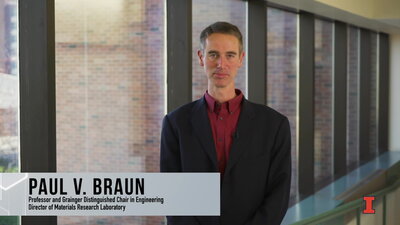
The Materials Research Lab (MRL) fosters interdisciplinary research at the forefront of materials science by bringing together world-class faculty, staff, postdocs, students, and industry in materials science, condensed matter physics, and materials chemistry in a highly-collaborative, progressive research environment.
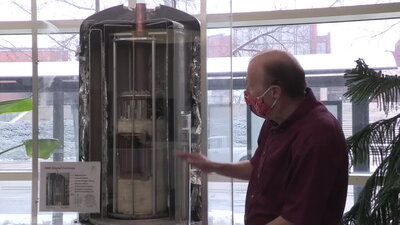
The Nuclear Magnetic Resonance (NMR) Laboratory offers a wide range of spectrometers, probes, and technical capabilities including multidimensional, multi-nuclear, and solid-state NMR on instruments ranging from three Varian Innova 500 MHz to a Varian 750 MHz widebore. Supported by four full-time staff and two student hourlies, ten spectrometers in three locations allow walk-up and long-term NMR experiments 24/7. New users receive about four hours of individual basic training with additional instruction available for variable temperature control, multi-dimensional NMR, and specialty spectrometers and experiments. Our primary goal is to provide the highest level of NMR performance to the students, staff, and faculty of the School and UIUC campus.

The George L. Clark X-Ray Facility provides complete structural characterization services using X-rays in solution, colloids, liquid crystals and solids. The facility performs a wide variety of X-ray diffraction experiments on WAXS, SAXS and two CCD instruments, and maintains structural database systems providing electronic search, retrieval, analysis and graphics for inorganic, organic and macromolecular structures. The professional staff offers instruction on small molecule and macromolecular crystal growth, design of X-ray experiments and strategies for data collection. Trained users have access to the single crystal diffractometers by appointment.
